After a busy spring of filming content for our new Online White Water platform, we had a few gaps that we wanted to fill. We’d been unable to get all the shots needed for some of our ‘Play the River’ course; downriver wave moves like kick flips and wave wheels, and drop moves like hammers.
Scotland was our planned destination for 4 days of filming. Hitting some of the drops on the Etive and using some sections on Scotland’s classics like the Orchy, Findhorn, and maybe the Spean. However, this wasn’t to be. An unbelievably dry start to November meant Scotland and most of the UK’s rivers were at very low, almost summer levels. With Chris lined up as the talent and myself and Simon with the time booked in to film, we needed to pivot to a new plan.
Five days later, Simon, Chris, and I found ourselves on the side of a remote Icelandic river being hammered by 60mph winds, horizontal rain, and a pretty nippy wind chill. We had been transported from one extreme to another. However, in between the rain and gales, Iceland delivered, and we managed to grab some cool shots and content.
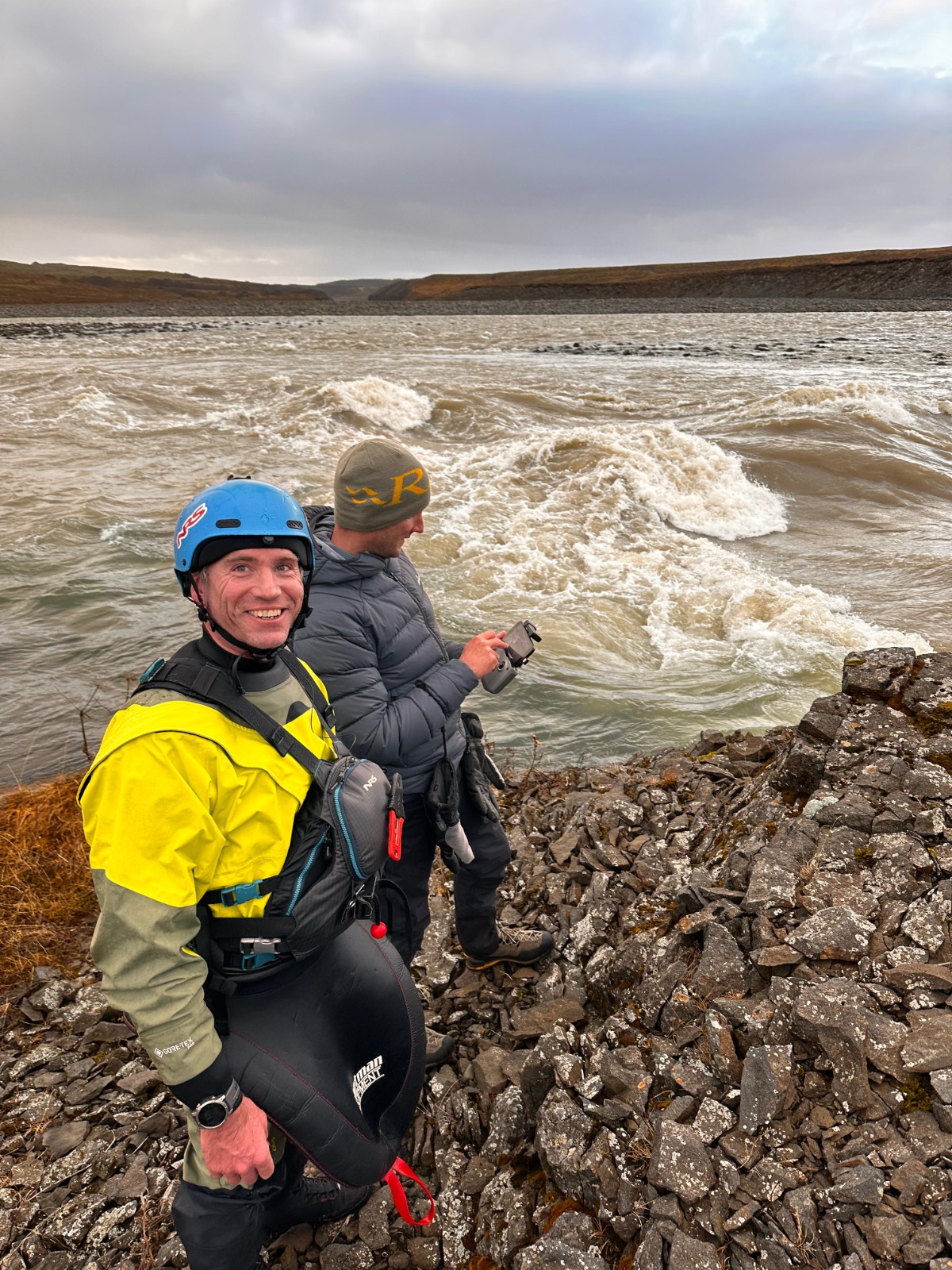
Both Simon and I have spent some time in Iceland and were well aware of its extreme weather. We were also aware that it is a stunning country with incredible landscapes, mega rivers, and the potential for some awesome filming.
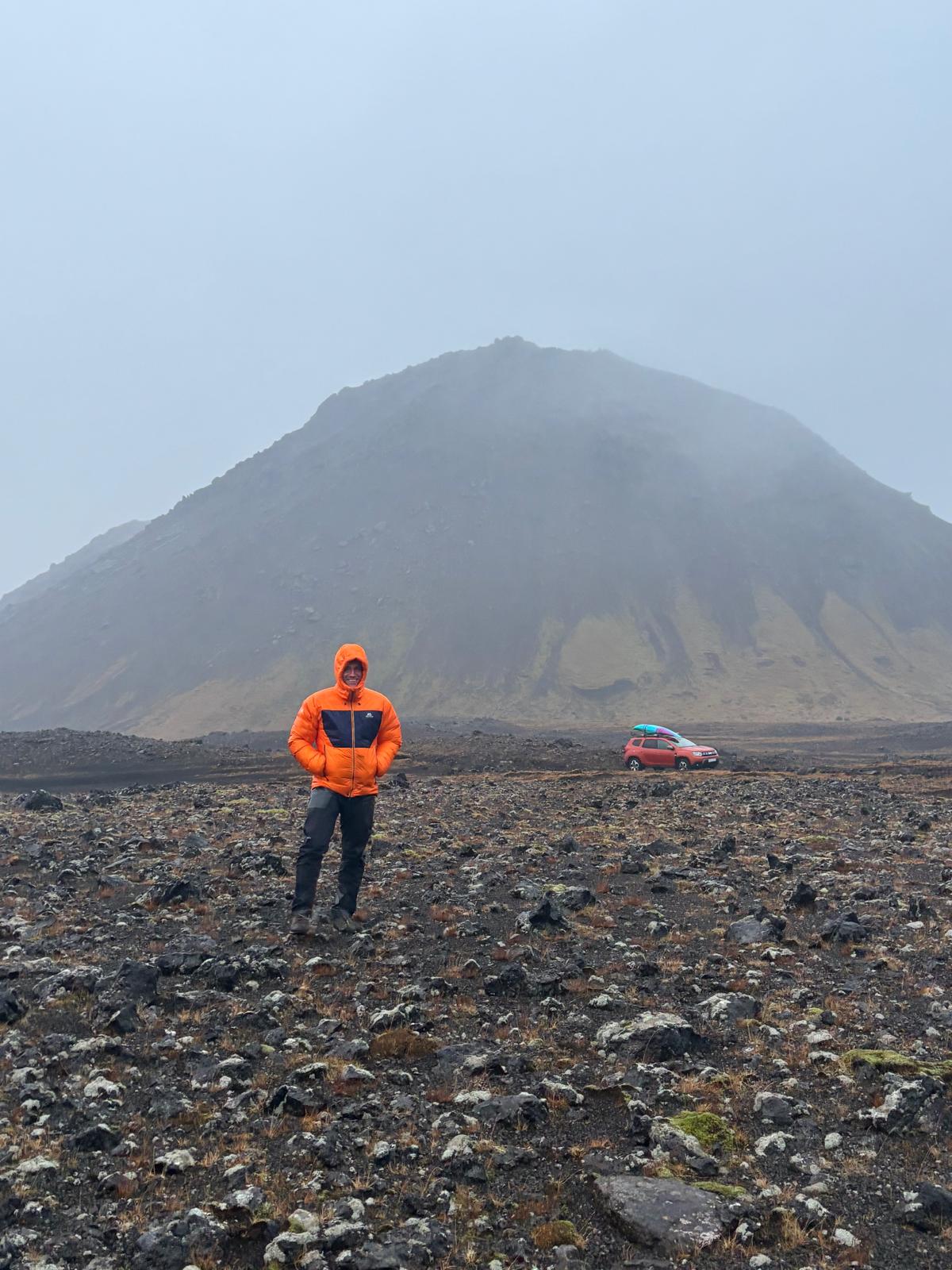
We needed some very specific features to get the shots we were after. For the drop moves, which included a hammer, reverse hammer, and the good old deck grab (you know you love it), we needed a feature or drop that had enough water moving off the lip to get a paddle stroke in and a deep landing, without being massive. A drop that was achievable for most aspiring river play paddlers out there. For the downriver moves, we needed a wave train feature that had a steep enough wave to get the kayak airborne, but nothing too enormous and without any nasties immediately downstream.
Once we touched down in the land of fire and ice, we set to work strapping the Pyranha Firecracker to the roof of our little Duster 4×4 and missioned off to scope some suitable filming locations. Biblical levels of rain meant we had decided to treat day 1 as a recce day. Johan, our awesome Iceland white water contact, had given a list of rivers and locations to check out.
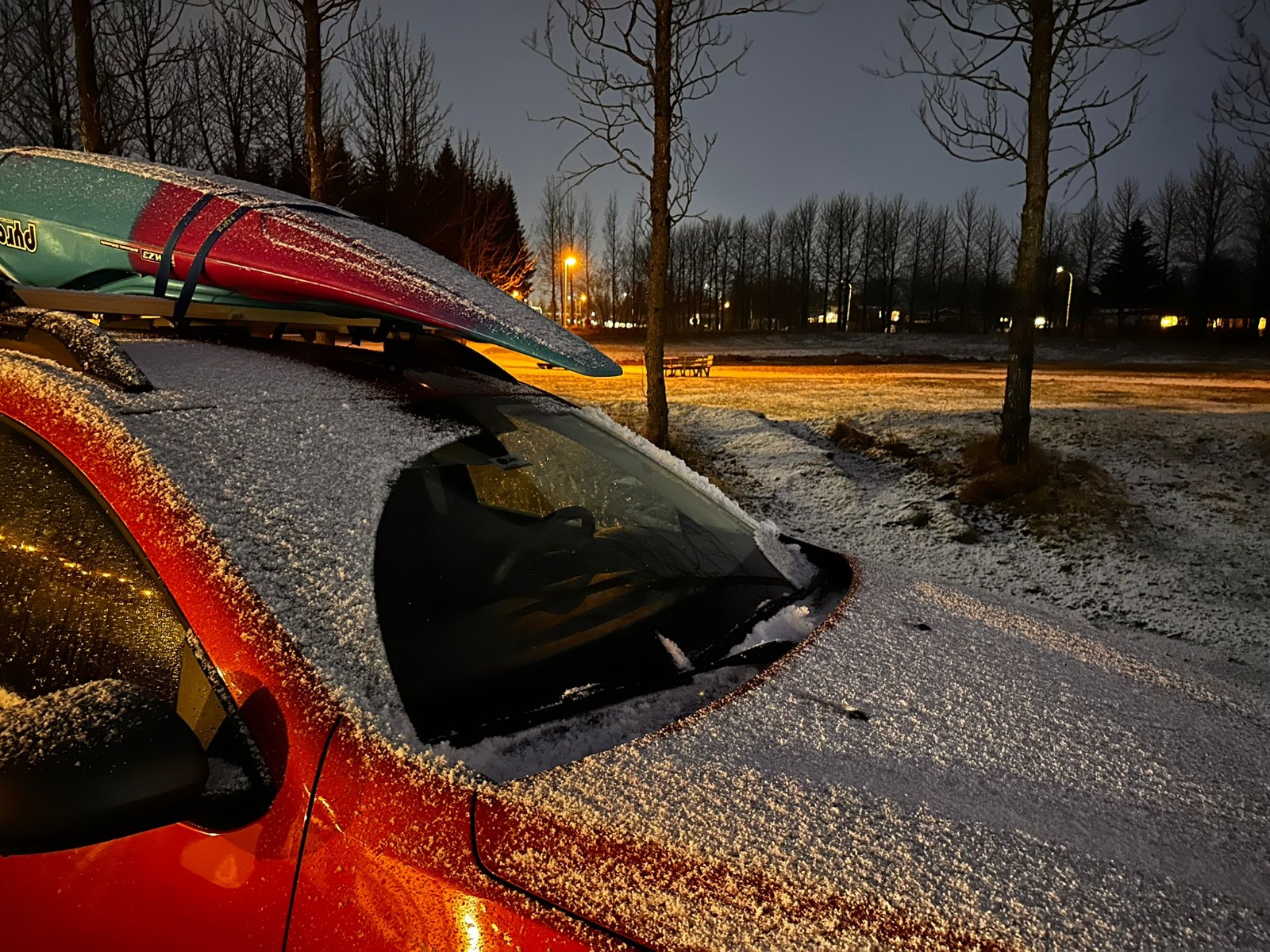
The first stop was a wave train and play feature on the Pjorsa, a big volume river with the mighty Urridafoss downstream. This looked very promising, a great front wave river-left that looked a good size and steep enough to launch for some nice wave wheels and kick flips. Awesome, we put this in our back pocket ready to return the next day.
The next location we scouted was a small drop on the Ytri Ranga. 45 minutes down an unsurfaced dirt track and a few wrong turns later, we managed to find the feature Johan had talked about. The 3m drop was the perfect height and was in a super picturesque spot; however, after Chris poked around a bit, it was decided the landing wasn’t mega deep, and the lip was a bit shallow. Not ideal for hammers, etc., where the risk of funny landings is high. River-left of this drop, where the river split, was a deeper yet smaller drop with a bit more water and a more forgiving landing. Chris decided to hop in the Firecracker and lap these two features a couple of times to suss out their suitability. Myself and Simon decided to try and grab a few shots, quickly pulling thousands of pounds worth of camera kit out from our waterproof jackets between downpours. We all decided that whilst this location wasn’t ideal, we could make it work, and if we find nothing else, we’ll return to get some filming done. Limited daylight hours meant we were approaching nightfall; we decided to head to our digs in Selfoss, get organised, and get ready to head to the promising-looking wave feature first thing.
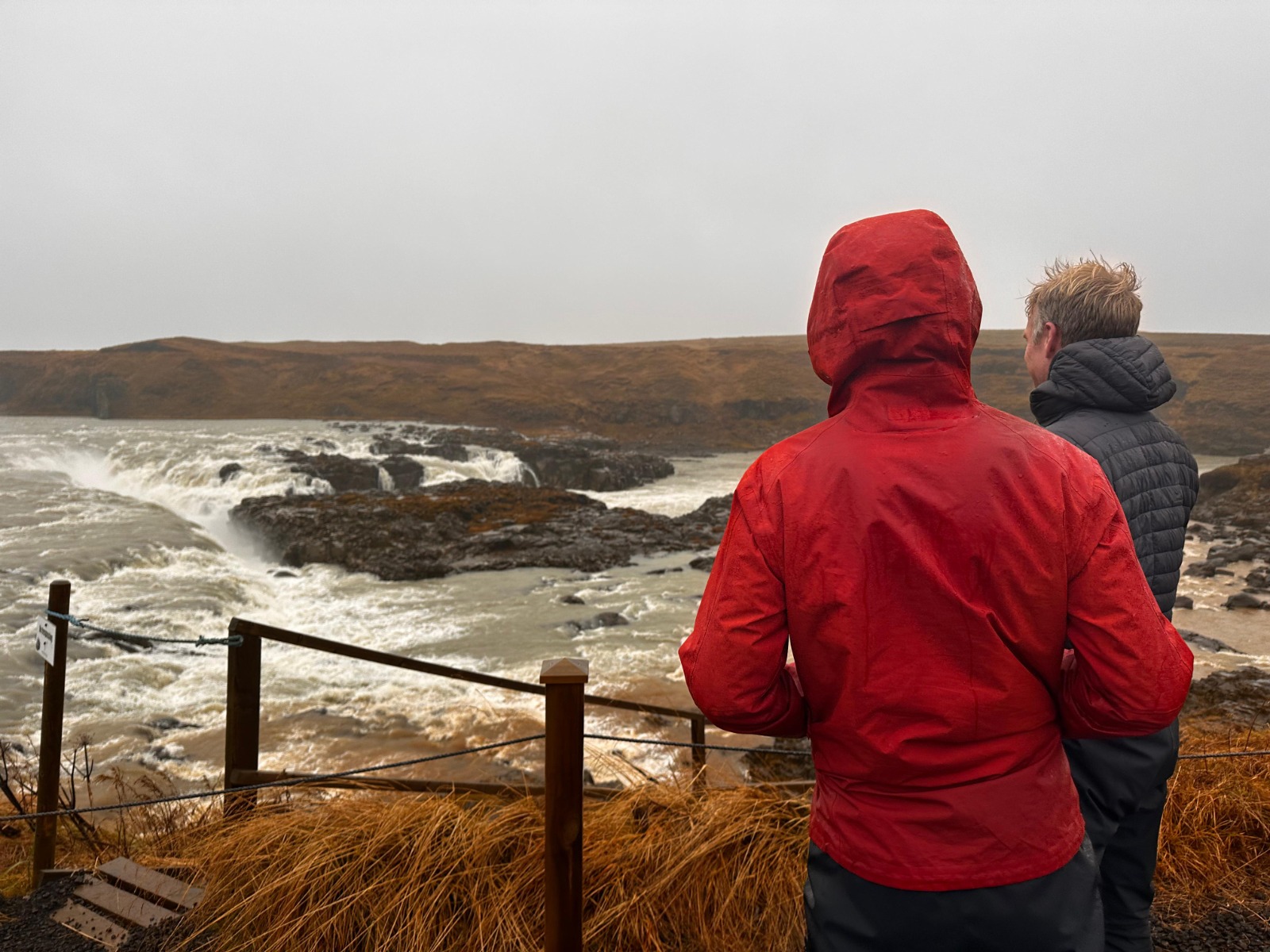
We packed the 4×4 with our filming kit and headed off into the damp and dark Icelandic dawn, ready to get some shots of Chris doing his thing on the wave feature we’d seen yesterday. We pulled up, hopped out, and wandered to the cliff edge to peer down to the river. All of our hearts sank; the river had now come up massively, and the features were totally washed out. There was way too much water, and no longer a safe section to work on!! Both Simon and I are very familiar with the sense of frustration when a filming opportunity is lost due to changes in conditions, weather, time, etc. We have both learnt not to get worked up and realise there is little we can do. Filming trips like this are often a gamble. Will we find the right location? Will the weather play ball? There are many variables.
Hey ho, down the road to the small drop feature we knew we could make work.
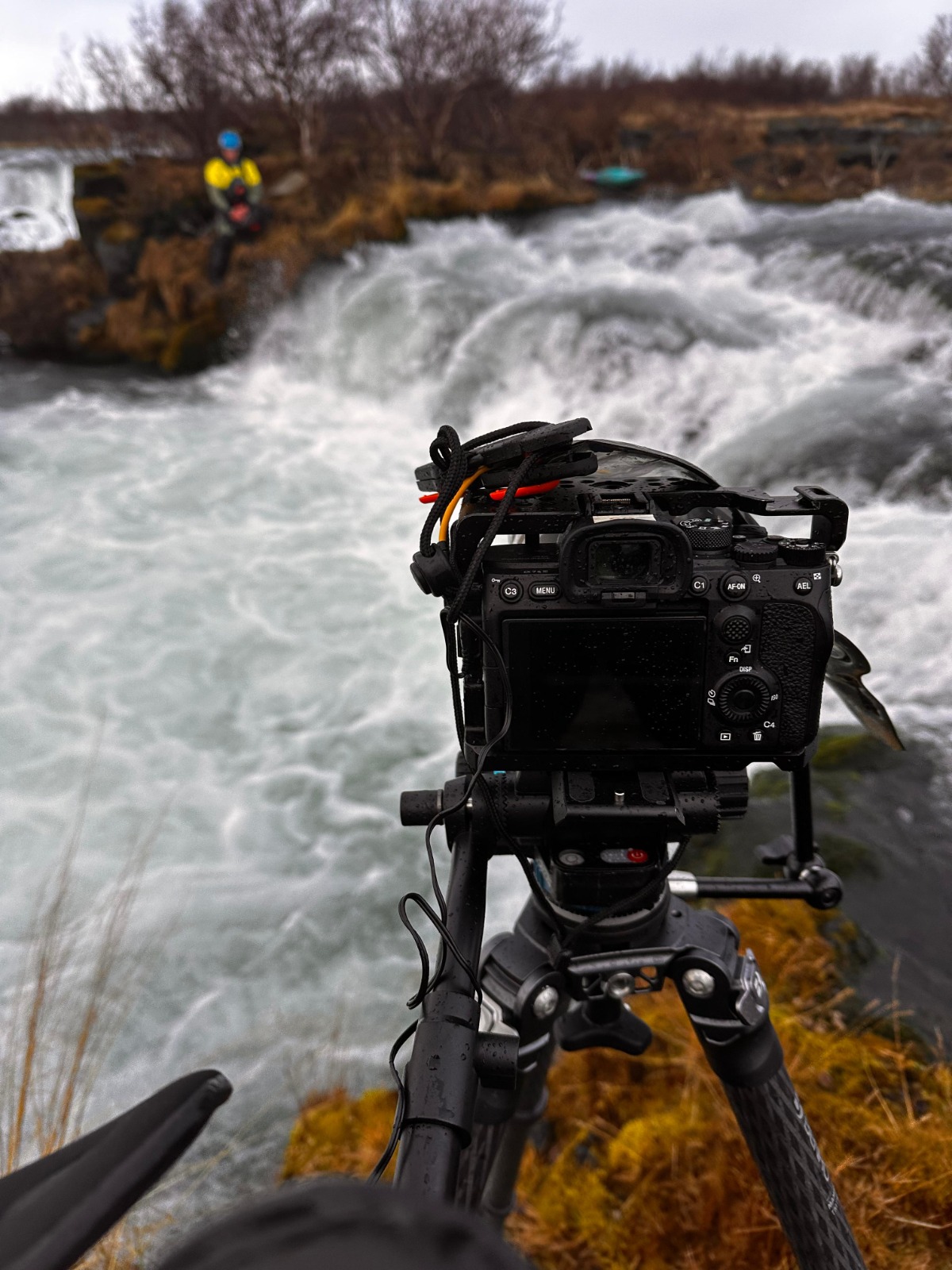
With Chris on the water, the sun came out, and we had a really productive half-day getting content for the drop moves section of the course. Although not a massive drop, Chris was styling it in the Firecracker with some neat little forward and backward hammers. Once we got some nice slow-mo shots, we hooked Chris up with our waterproof microphone kit. This allows us to capture audio of Chris talking through some of the techniques as he actually paddles the feature. Although still super windy, we were both pleasantly surprised with the quality of the audio we got.
We wrapped things up at the drop and decided to scout around and check out some more potential spots we’d been told about. Despite some more awesome-looking drops, unfortunately, everything was just a bit too big for the aims and objectives of the course we were filming for. It’s really important to us that we paint a suitable picture and promote both best- and safe-practice. Encouraging our viewers to reverse hammer off 30-footers isn’t something we are keen on. As cool as they look, flat or awkward landings can result in a serious back injury.
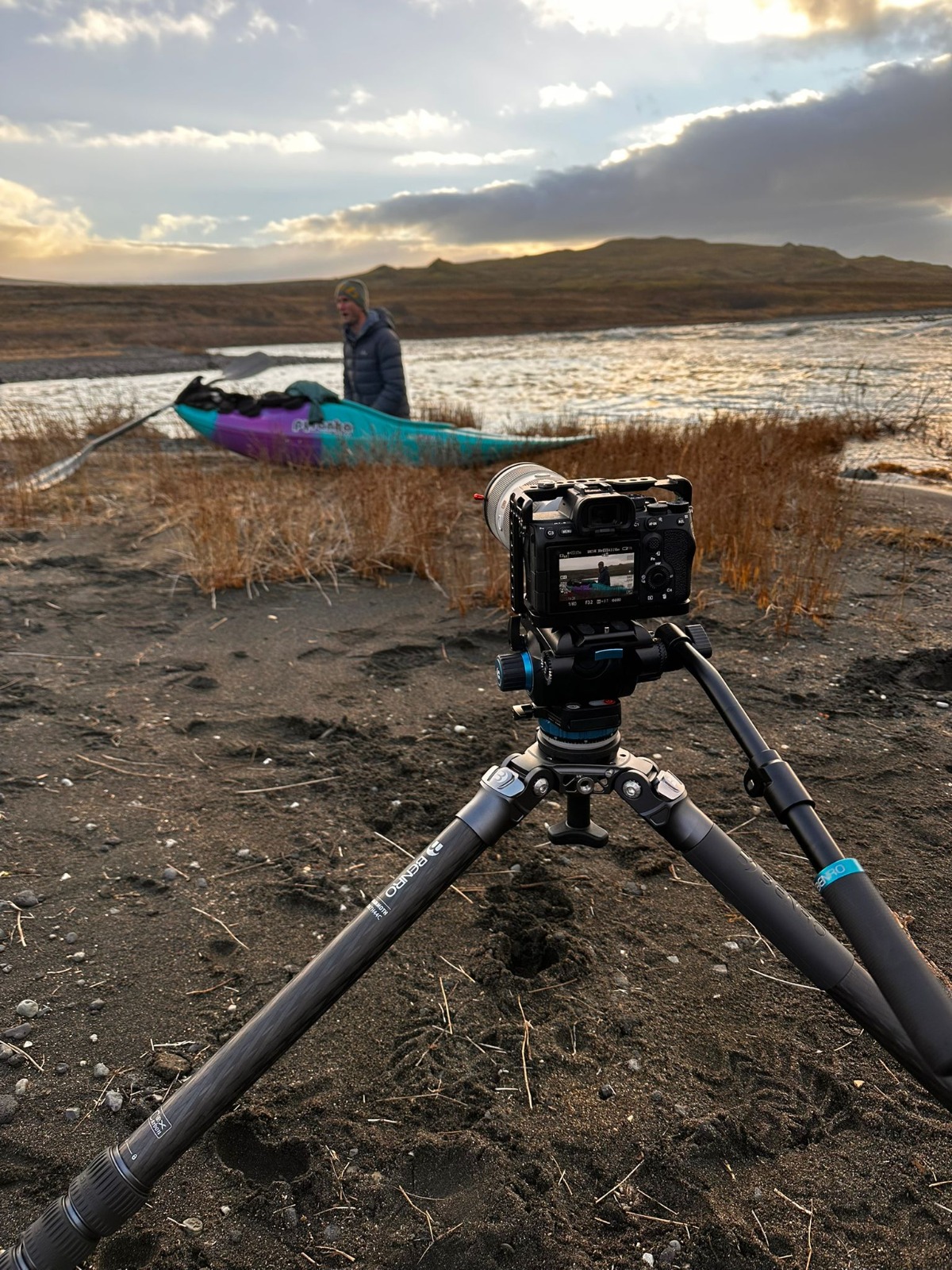
With day two coming to an end and only two remaining days left to film, we were feeling the pressure a little. Back to Selfoss to warm up and have some food and a rethink. The evening was spent scouring Google Earth for potential features. The satellite image showed a potential wave train a few km downstream from the enormous Gullfoss. Fingers crossed tomorrow delivers.
We set off again in the morning gloom towards Hvita River, hopeful that we get the feature we need. Satellite images showed a couple of 4×4 tracks down to the river where we could scout from. The first section we visited didn’t work, but over in the distance just upstream we could see what looked like the perfect wave train. More sketchy 4×4 tracks, and we hopped out, eager to check out the spot. Bingo, it looked ideal. Perfect big eddies, super easy to session, and an ideal bank to film on, and what’s more, the sun came out.
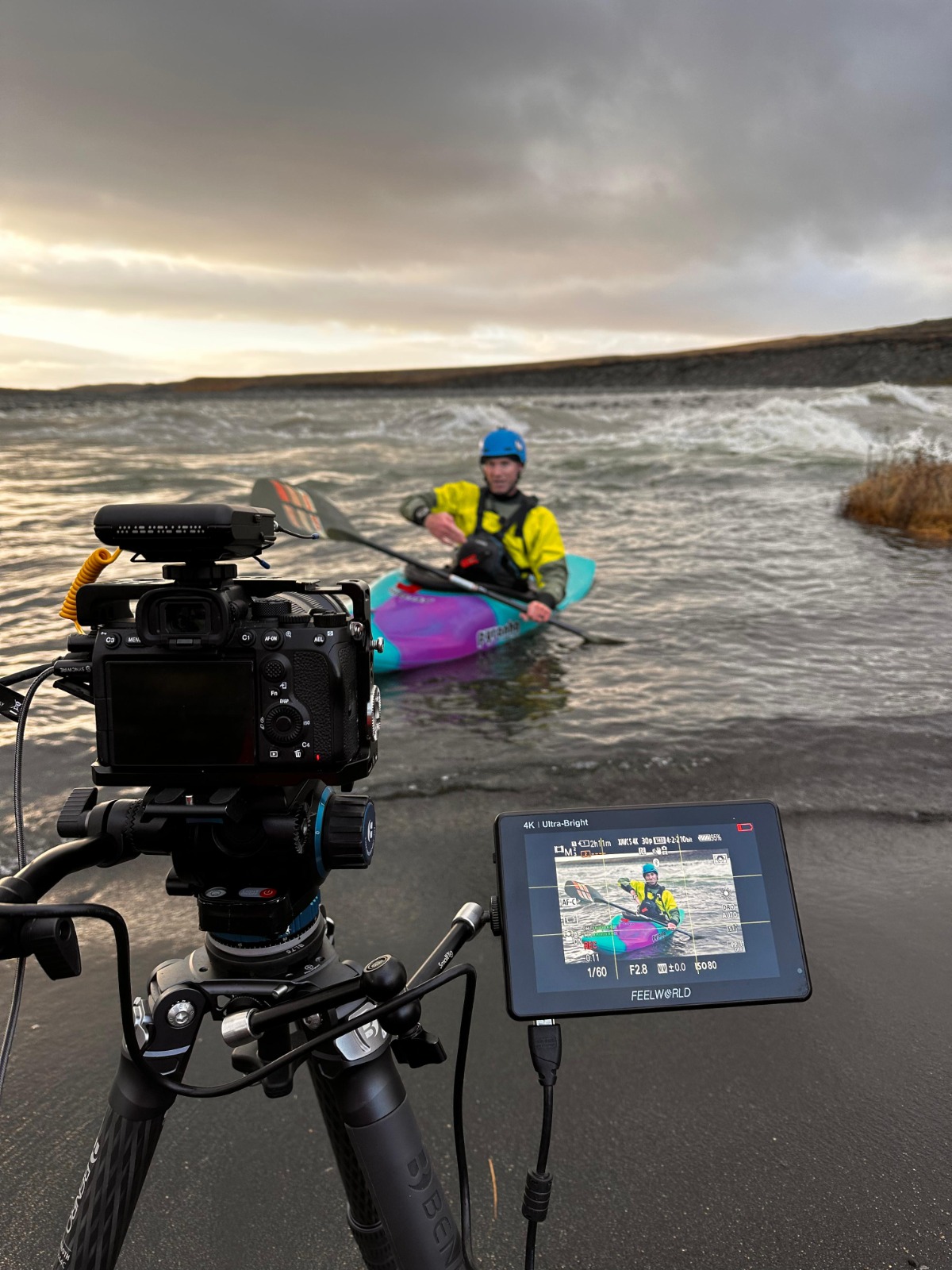
After a couple of runs down to suss out the feature, Chris threw down a sweet kickflip; getting the Firecracker airborne didn’t seem to be an issue. A superb few hours getting some great shots and beautifully clear audio of Chris talking through and demoing airs, wave wheels, and some super clean kickflips. Spirits were high. It felt like we were getting the shots we’d come to Iceland for. As the sun started to set in the valley, we recorded the last of the bank-based pieces to cameras, packed up, and headed home for a beer and high fives.
Day four arrived, and our last opportunity to film. The forecast was for very strong winds and rain, yet unperturbed, we set off in hope. We were still keen to find the perfect drop. We’d got what we needed, but a few more shots of something with a little more height would be great. We’d heard of a clean 3-to-4-metre drop on the Ystri Ranga, so we went to see. This was a more epic drive. An hour or so along one of Iceland’s F roads. These F roads are public access but are only suitable for 4-wheel drive and can take you into some extremely remote areas. An hour down this F road the wind and rain battered our poor Dacia Duster, at times it felt like we were driving across the surface of Mars. Iceland truly is unbelievably wild. We jumped out of the car, all looked at each other, and just laughed about how epic it felt. We headed across the wild mix of old lava fields and moorland in search of the drop. Finally, we stumbled upon it: a great drop, but sketchy and massively undercut behind a large curtain of water. Any issues and you could find yourself behind the falls and not coming out in a hurry. This didn’t feel great, and Chris quite rightly expressed his concerns. The combination of location, distance from help, and strengthening storm all made it an easy choice. We retreated and returned to our original, more friendly drop to pick up the last few reaming shots of Chris pulling out that old-school staple… the deck grab.
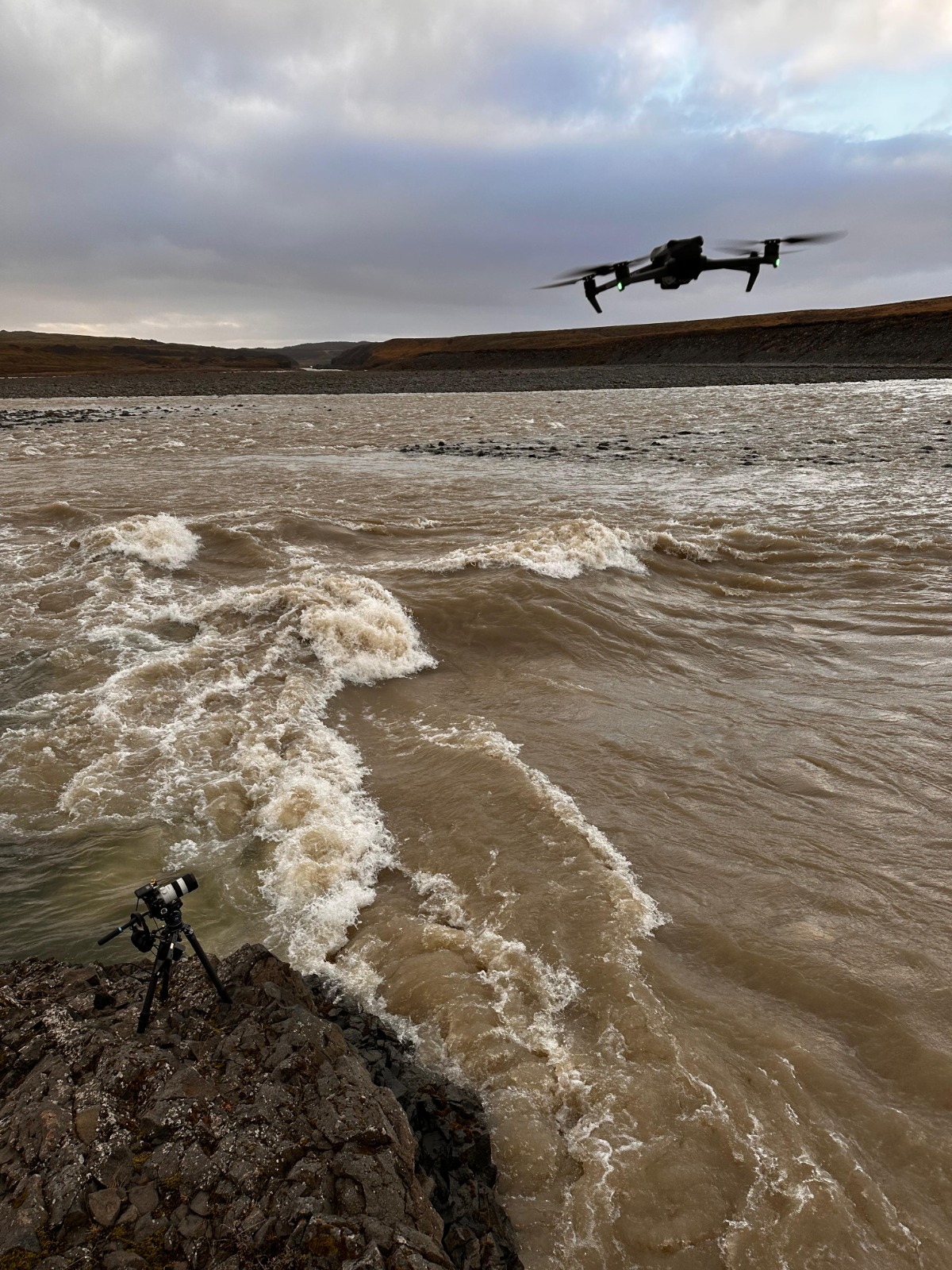
The following morning at the airport it looked like we wrapped things up in the nick of time. All flights had been grounded due to 100mph winds, it was snowing heavily, and the wind, which had swung round to the North, was flippin’ freezing. A day of killing time at the airport, waiting for the storm to calm before heading back to the UK.
Iceland has always blown my mind. Wild and beautiful, it’s drawn me back many times. We didn’t quite get all the shots we’d wanted, but it certainly felt like we captured some cool content and had some ideas and beta for future projects. Was November the right time for a whitewater filming trip in Iceland? Maybe not, but in the immortal words of Delboy Trotter, “he who dares”.



